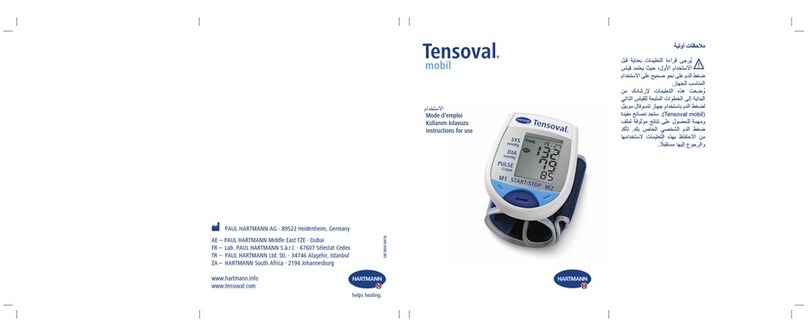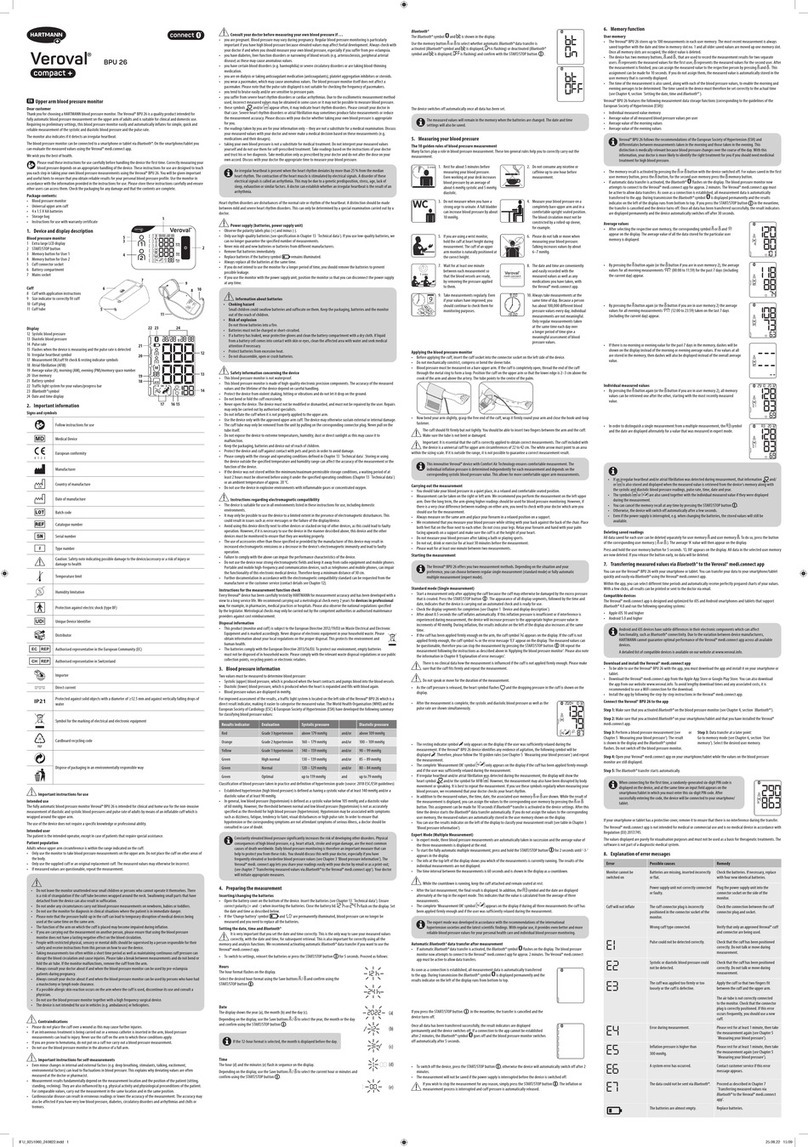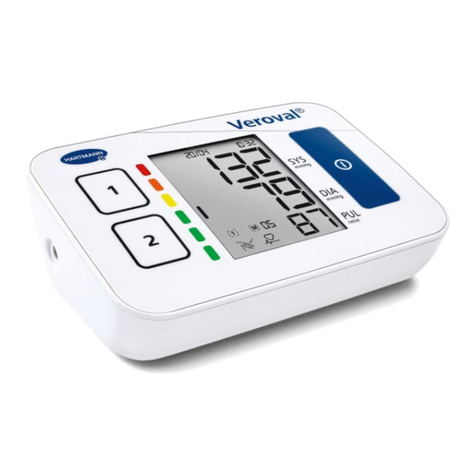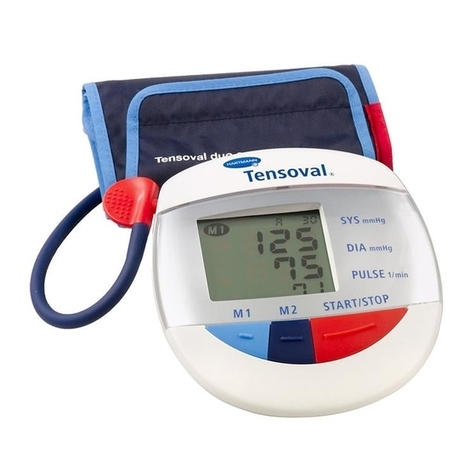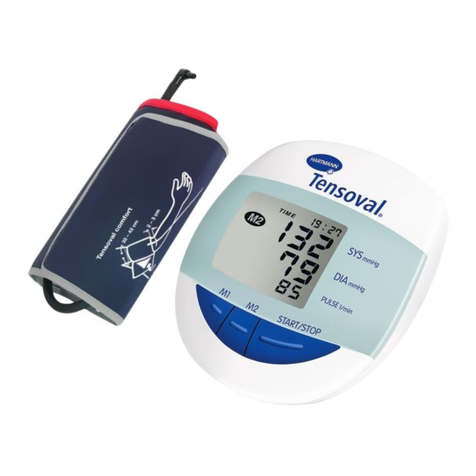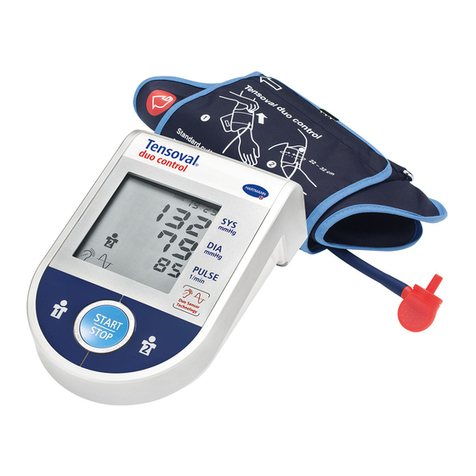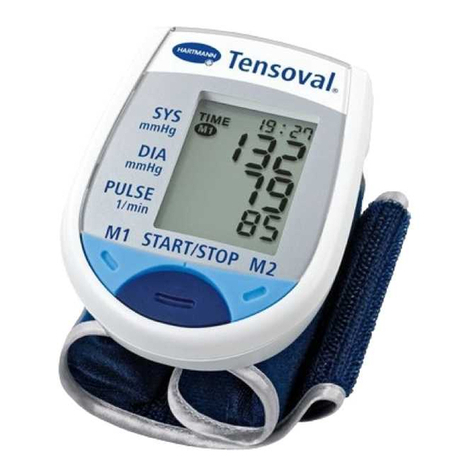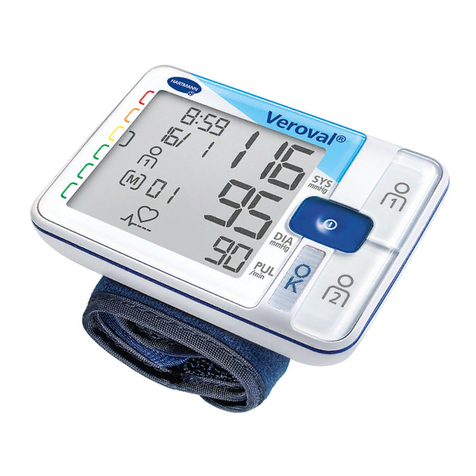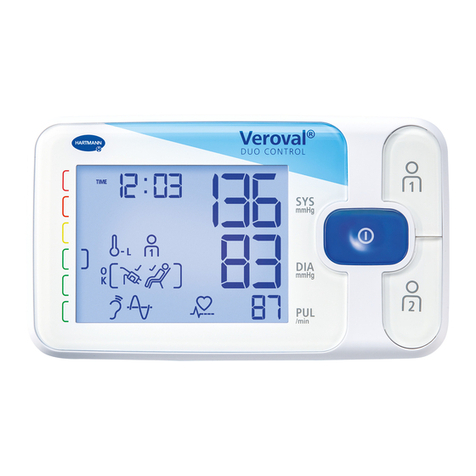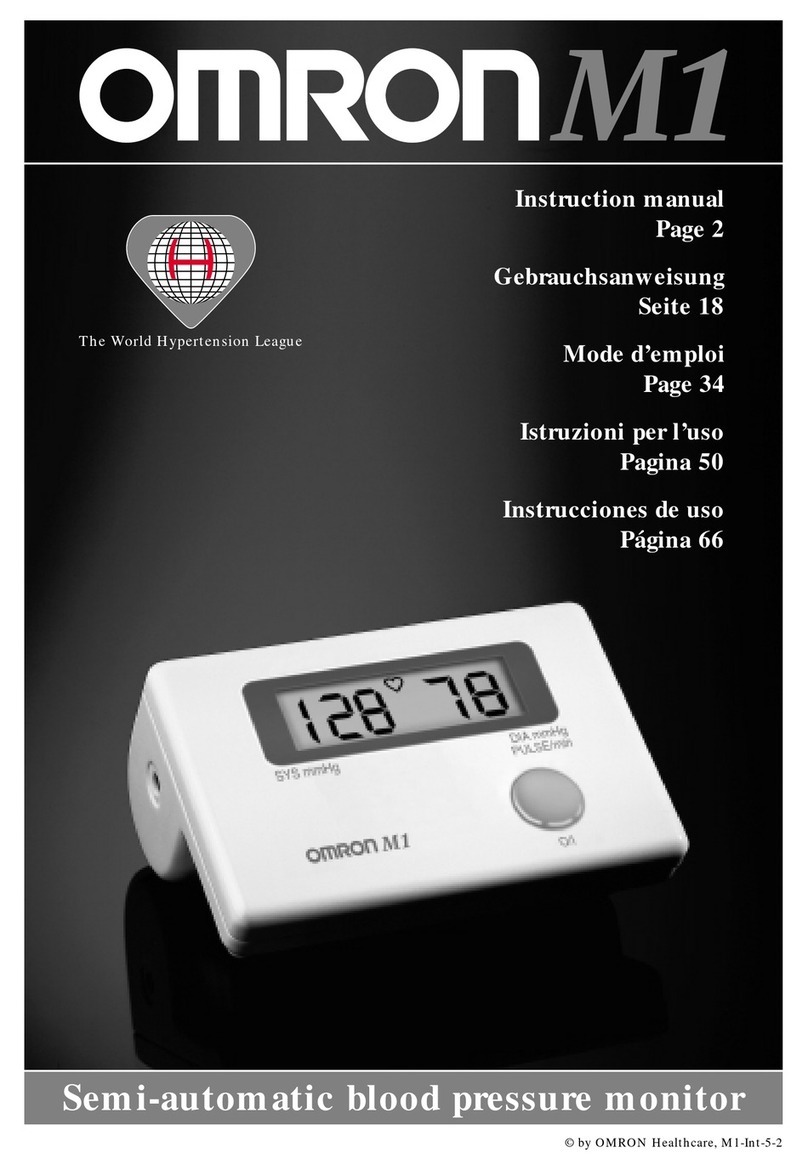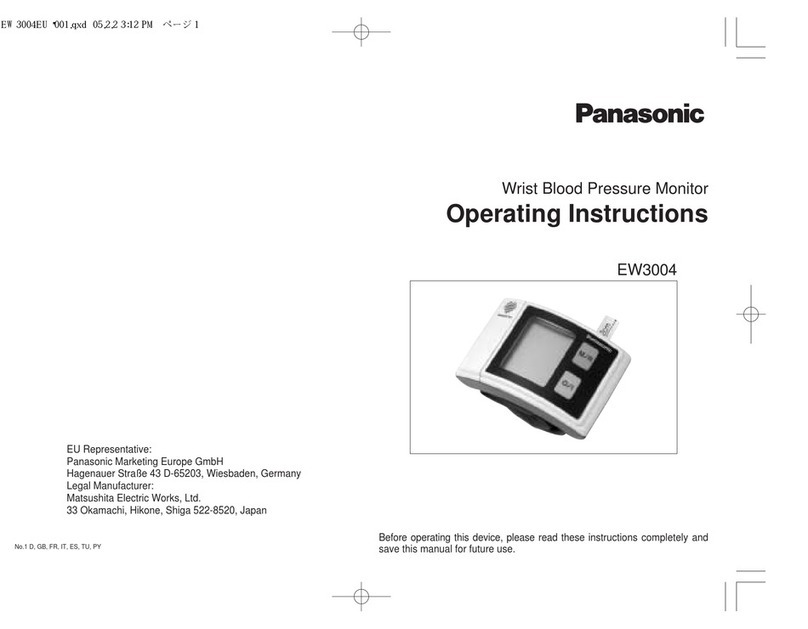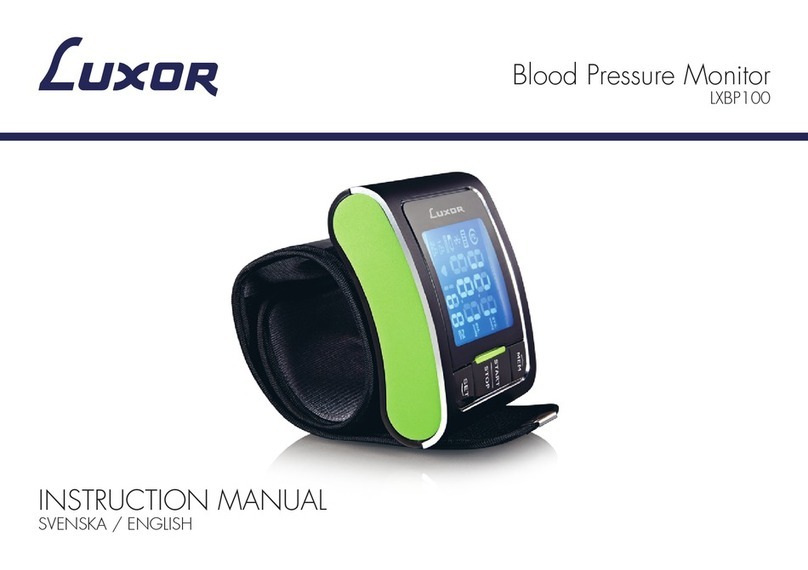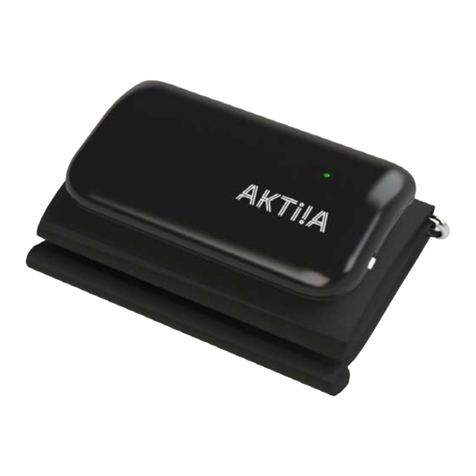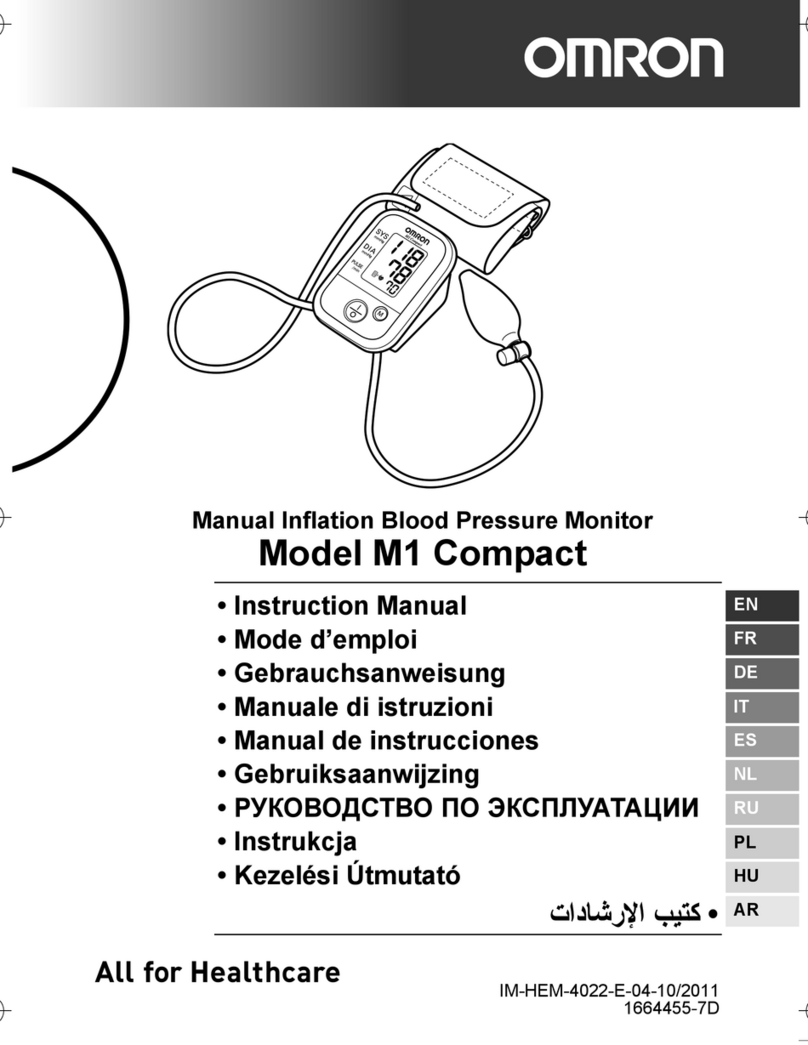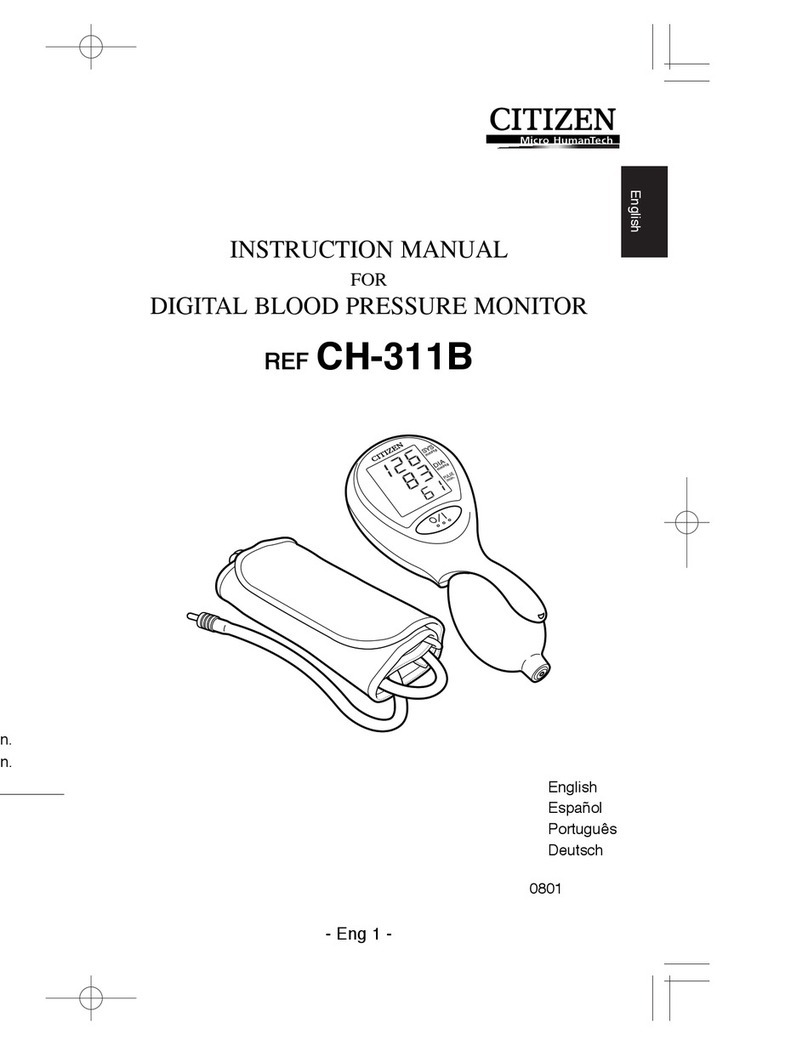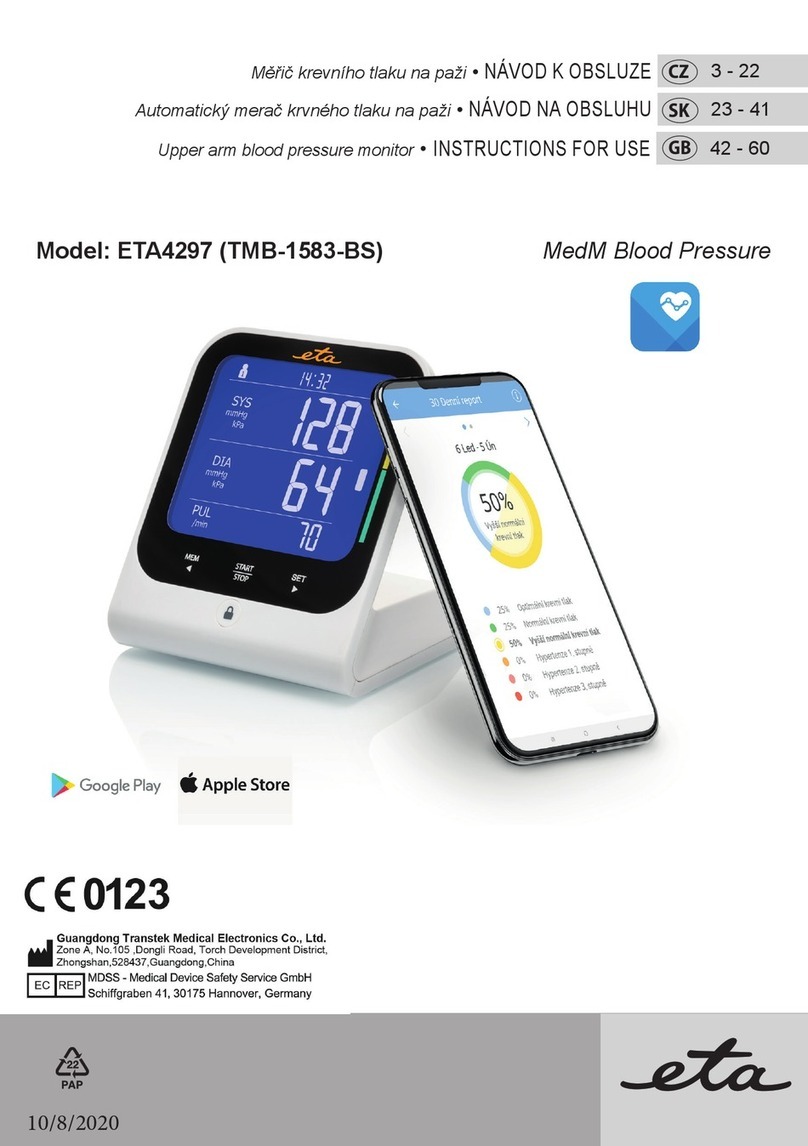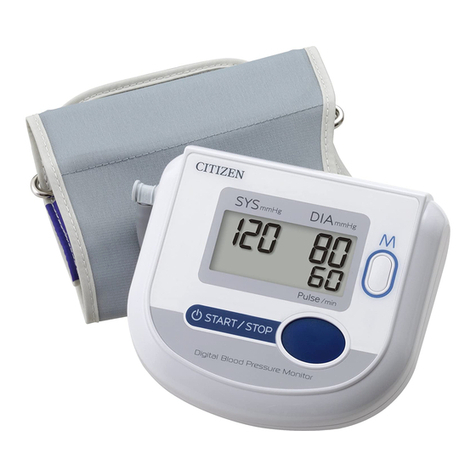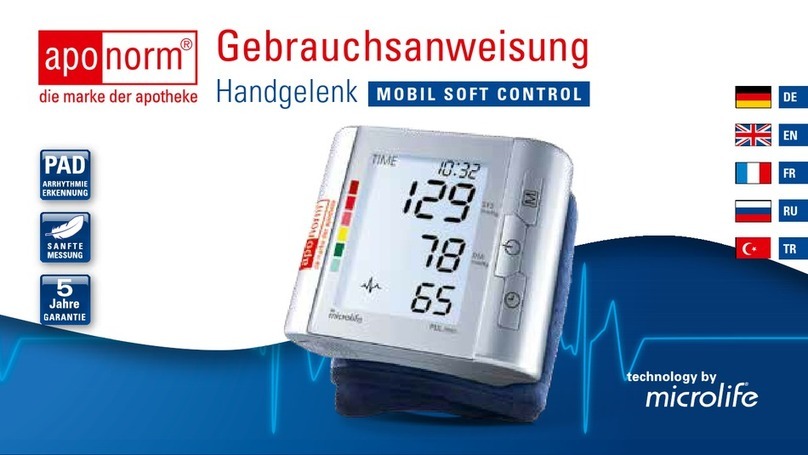
10 11
English English
EN EN
■ The function of the arm on which the cuff is placed may become impaired
during inflation.
■ If you carry out the measurement on yourself or another person, please
ensure that using the blood pressure monitor does not lead to ongoing
reduction in the blood circulation.
■ Taking measurements too often within a short time period as well as
maintaining continuous cuff pressure can disrupt the blood circulation and
cause injury. Please take a break between measurements and do not kink
the air tube. If the monitor malfunctions, remove the cuff from the arm.
■ If a possible allergic skin reaction occurs on the arm where the cuff is used,
discontinue its use and consult a physician.
■ Always consult with your doctor about if and when the blood pressure
monitor can be used by pre-eclampsia patients during pregnancy.
■ The device is not intended for use in vehicles (e.g. ambulances) or
helicopters.
Important instructions for self-measurements
■ Even slight changes in internal and external factors (e.g. deep breathing,
stimulants, speaking, excitement, ambient temperature) lead to fluctuations in
the blood pressure. This explains why deviating values are often measured at
the doctor or pharmacist.
■ Measurement results depend fundamentally on the measurement location and
the position of the patient (sitting, standing, reclining). They are also affected
by exertion and the physiological condition of the patient. For comparable
values, carry out the measurement in the same location and the same
position.
■ Diseases of the cardiovascular system can lead to erroneous readings or lower
the accuracy of the measurement. The accuracy may also be affected if you
have very low blood pressure, diabetes, circulatory disorders and arrhythmias
as well as chills or tremors.
Consult your doctor before measuring your own blood pressure if …
■ you are pregnant. Blood pressure may vary during pregnancy. Regular blood
pressure monitoring is particularly important if you have high blood pressure
because elevated values may affect foetal development. Check with your
doctor in any case to find out if and when you should measure your own blood
pressure, especially if you suffer from pre-eclampsia.
■ you have diabetes, liver function disorders or narrowing of blood vessels (e.g.
arteriosclerosis, peripheral arterial occlusive disease) or other pre-existing
disorders or physical anomalies: in these cases, deviating measurements may
occur.
■ you have certain blood disorders (e.g.
haemophilia) or severe circulatory
disorders or are taking blood thinning medications.
■ you are on dialysis or taking anticoagulant medications (anticoagulants), platelet
aggregation inhibitors or steroids.
■ you wear a cardiac pacemaker: this may lead to deviating measured values. The
blood pressure monitor itself has no impact on cardiac pacemakers. Please note
that the pulse rate displayed is not suitable for checking the frequency of cardiac
pacemakers.
■ you tend to bruise easily and/or are sensitive to pressure pain.
■ you have a severe heart rhythm disorder or arrhythmias or atrial fibrillation
(Afib).
■ If this symbol
increasingly appears
, it may indicate heart rhythm disorders or
arrhythmias. If this is the case, please consult your doctor. Severe heart rhythm
disorders, arrhythmias or atrial fibrillation may lead to incorrect measurements
or affect the measuring accuracy. Please discuss with your doctor whether taking
your own blood pressure readings is suitable for you.
■ Your self-measured values are for your information only – they are not a
substitute for a medical examination! Discuss your measurements with your
doctor and under no circumstances make your own medical decisions based on
these measurements (e.g. medications or their dosage)!
■ Measuring your own blood pressure is not a substitute for medical treatment!
Do not interpret your measured values by yourself and do not use them for
self-prescribed treatment. Take measurements based on the instructions of your
doctor and trust his or her diagnosis. Take medications as prescribed by your
doctor and never change the dose on your own. Discuss the appropriate time to
measure your blood pressure with your doctor.





















